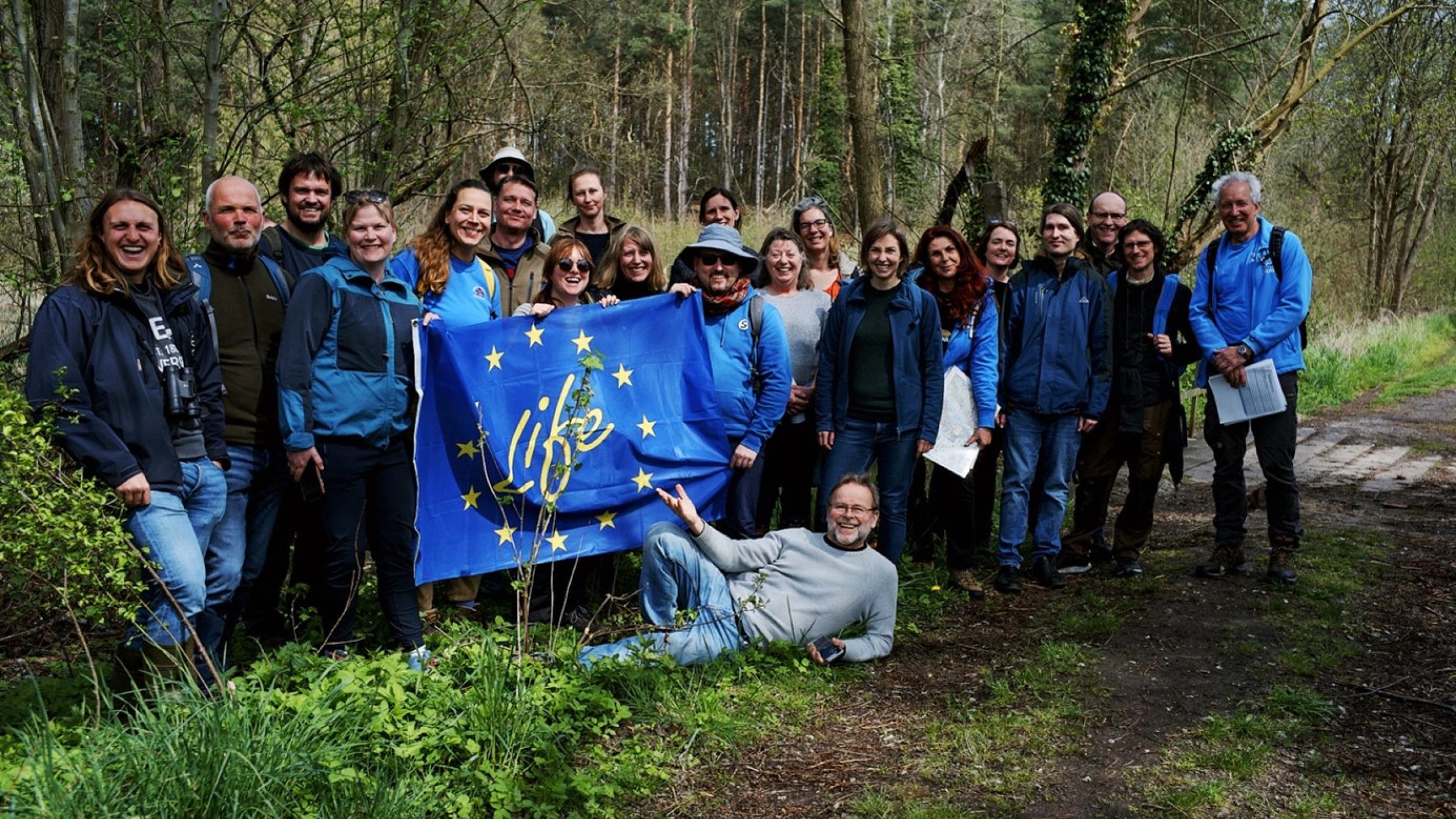
LIFE Peatland Platform 2023: ESG as a driver for wetlands rewetting and restoration
At the LIFE Peatland Platform in Berlin from 26 to 28 April 2023, Paul Leadbitter (North Pennines AONB) and Dan Hird (finance consultant) gave gripping insights on bringing the private sector into peatlands rewetting and restoration. It emerged that Environmental, Social and Governance (ESG) is the main driving force behind this development.
From CSR to ESG
Since the beginning of the new millennium, Corporate Social Responsibility (CSR) has been the preferred tool to showcase a company’s compliance as a responsible citizen. But in view of the two-fold climate and nature crisis, the term "greenwashing" has tainted the image of CSR as it became a story-telling marketing tool lacking objective measures. Today, companies are shifting from CSR to (broadly) correct ESG scores to address the apparent changes in society’s ESG systems and the accusation of greenwashing.
As climate warming requires fast action to mitigate incidents like wildfires, droughts, and flooding, reducing greenhouse gas (GHG) emissions is an obvious action. Although companies are already improving their footprint in the scopes one to three (direct emissions, indirect emissions linked to energy/utilities, indirect emissions linked to travel and other services), the need to offset carbon emissions is great. This is where carbon offsets from ecosystem services could come into play.
Carbon offsets for rewetted peatlands
Peatlands, when degraded, emit large amounts of GHGs. Rewetting them stops much of the emissions. The delta of these emissions, described as tonnes per hectare and year, can be sold as a carbon offset certificate. The owners of such carbon offsets are the landowners of the respective rewetted peatland. To measure the saved emissions accurately and to mitigate the risk (e.g. peatland fires, unreliable landowners, or offset buyers), a trustworthy organization behind the carbon offsets and a certified measure protocol are needed.
The National Trust for Scotland, in collaboration with the UK National Committee of the IUCN, is the licensing body for the Peatland Code (PC). It validates the code through ISO 14064-3 and 14065, which quantifies, monitors, reports and verifies GHGs in an internationally acclaimed norm. This provides corporations with a guarantee for the value and integrity of their investment. As the minimum running time for PC-eligible projects is 30 years and the risk is addressed by a 15% deduction of a project’s GHG into the Peatland Code Risk Buffer - plus, the standards for eligible projects are very high - the Peatland Code could be an attractive option for serving a company’s ESG needs.
Barriers to uptake of carbon credits for peatlands
However, demand is low, and so is the price. For reference, the 15-25 GBP that would be charged for a one-tonne PC certificate is not remotely in the ballpark of European ETS carbon credits (in March 2023, they hit the 100 EUR mark).
Why is that? First, landowners may be lured to the idea that waiting for a more substantial carbon market is clever. Paul Leadbitter states that this issue is real, leaving degraded peatlands unrestored. Second, there are traditional, proven and competitive alternative uses of peatlands, such as grazing cattle and sheep pastures or providing hunting grounds for grouse-shooting tourists (like in some areas in the Great North Bog). Third, buying carbon offsets from peatlands restoration projects is relatively new to corporations and has yet to establish itself as a proven alternative despite the high quality of the Peatland Code.
The European context
How does all of that make sense in a European context? As the Peatland Code is designed to deal with specific UK peatlands needs and only applies there, it cannot be transferred to the continent. However, there is a similar code in Europe: the German Moorfutures. But compared to the UK, the Moorfuture projects are considerably smaller. The ongoing project "Königsmoor II", for example, comprises 28 hectares. Other already sold-out projects are around 10-90 hectares. The price per future is 75 EUR per tonne, a market-oriented price.
Leadbitter and Hird identified unfavourable subsidies for farming on peatlands, other uses, and reservations on the buyer and seller side as the main hurdles. On the continent, the European Union's Common Agricultural Policy (CAP), with its strong incentive to drain peatlands for agricultural use, is the obvious obstacle to the rewetting of peatlands. With these subsidies in place, large-scale rewetting remains largely an impossible undertaking. 95% of German peatlands are degraded and in agricultural use, amassing 5% of Germany’s CO2 budget.
See also: Is green finance unlocking action for peatlands restoration? (Eurosite)
Photo credit: Hans von Sonntag, Eurosite.